Synology DS415+ Review: DSM on Intel Rangeley
by Ganesh T S on October 30, 2014 7:30 AM EST- Posted in
- NAS
- Storage
- Intel
- Synology
- Silvermont
- Enterprise
- Rangeley
Single Client Performance - CIFS & iSCSI on Windows
The single client CIFS and iSCSI performance of the Synology DS415+ was evaluated on the Windows platforms using Intel NASPT and our standard robocopy benchmark. This was run from one of the virtual machines in our NAS testbed. All data for the robocopy benchmark on the client side was put in a RAM disk (created using OSFMount) to ensure that the client's storage system shortcomings wouldn't affect the benchmark results. It must be noted that all the shares / iSCSI LUNs are created in a RAID-5 volume. The DS415+ manages to compare favorably against the ARM-based solutions, obviously. The real tussle in these single client scenarios is not against the other Rangeley NAS (Seagate NAS Pro), but against the QNAP TS-451 based on Bay Trail-D. Both DSM and QTS are mature operating systems. The higher core count in the DS415+'s Atom C2358 compared to the TS-451's Celeron J1800 probably help the former edge ahead in most of the benchmarks presented in the graphs below.
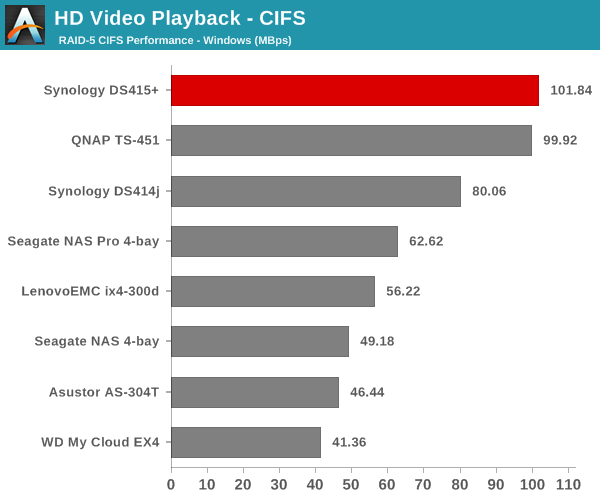
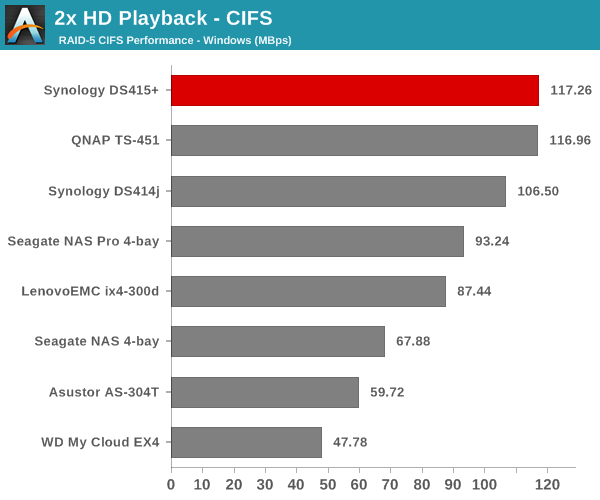
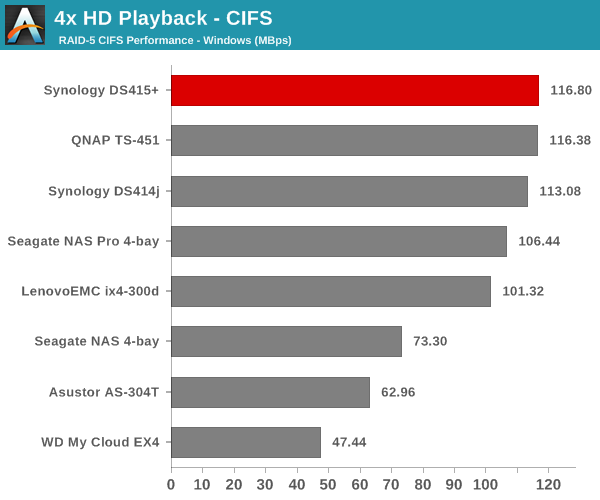
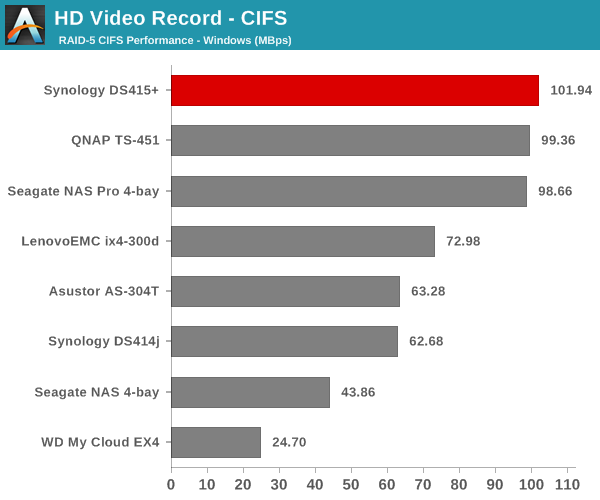
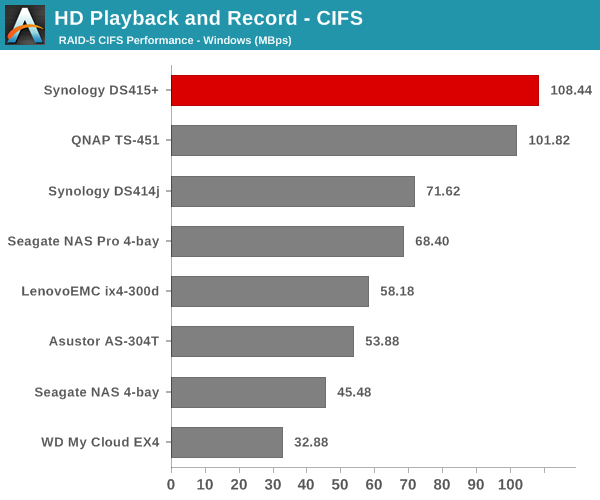
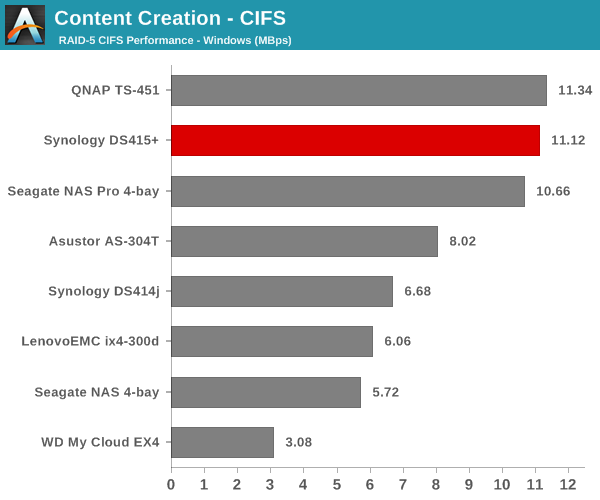
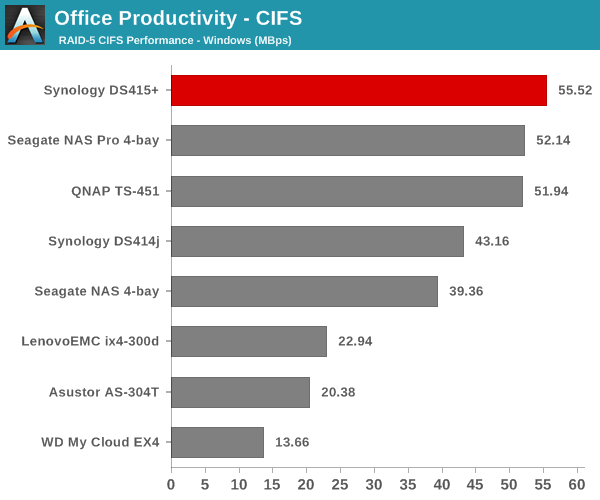
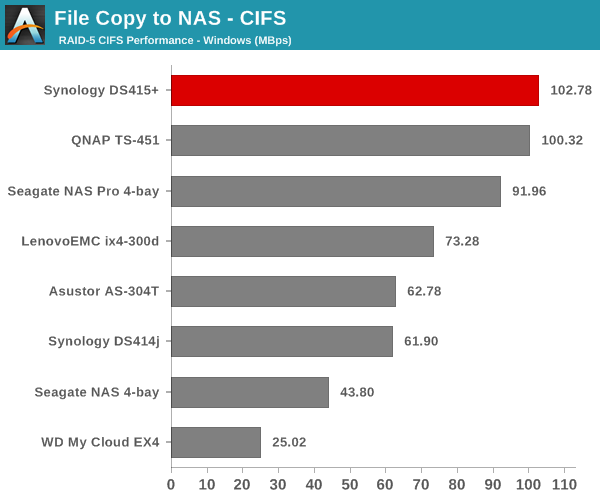
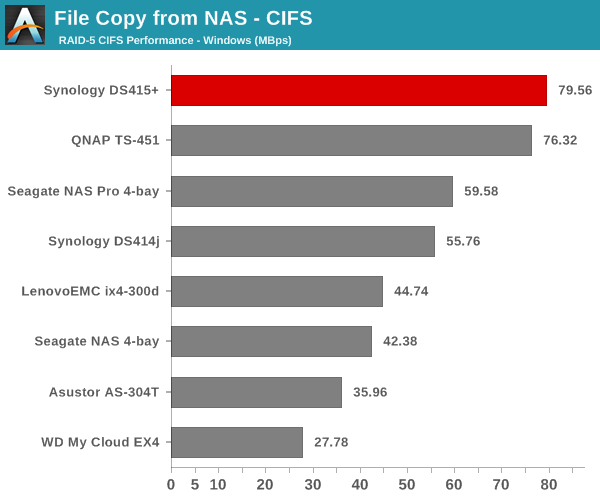
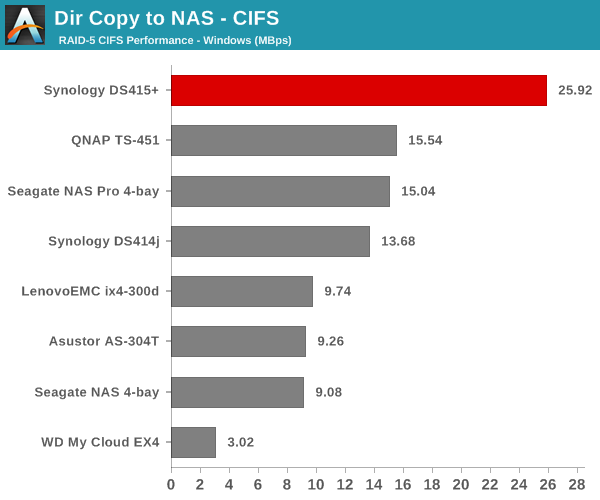
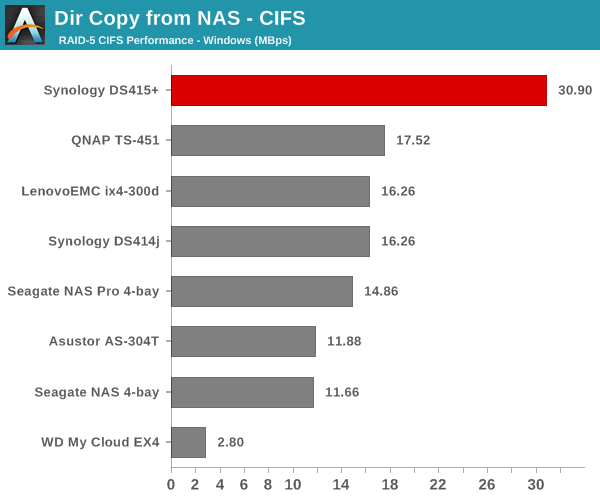

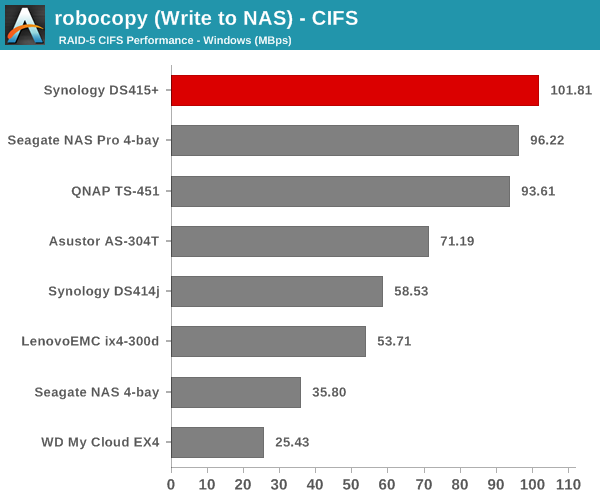
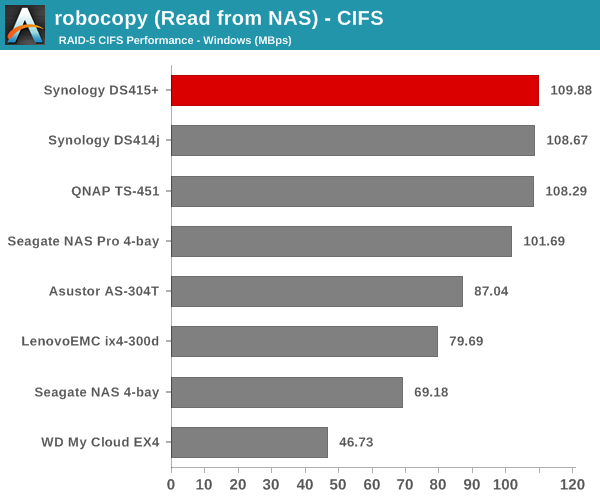
We created a 250 GB iSCSI LUN / target and mapped it on to a Windows VM in our testbed. The same NASPT benchmarks were run and the results are presented below. The observations we had in the CIFS subsection above hold true here too.
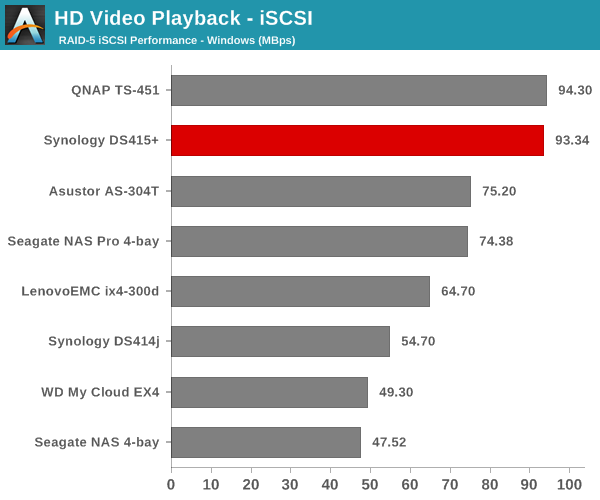
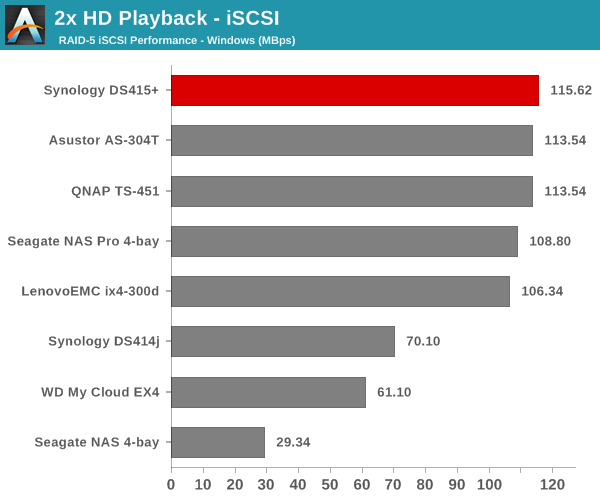
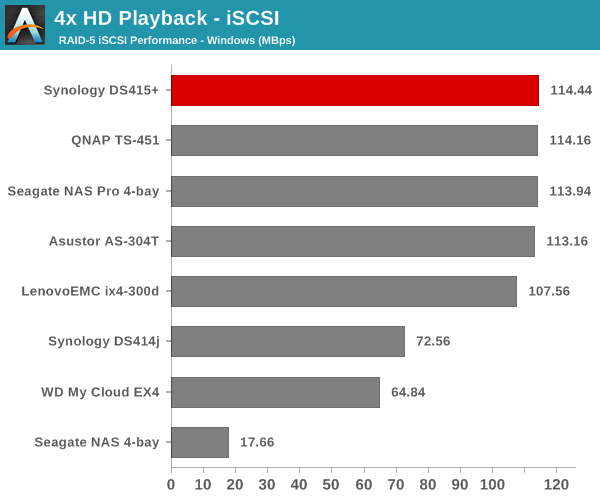

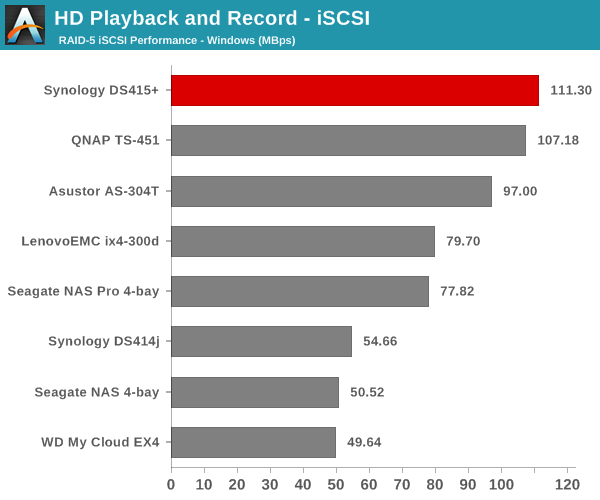
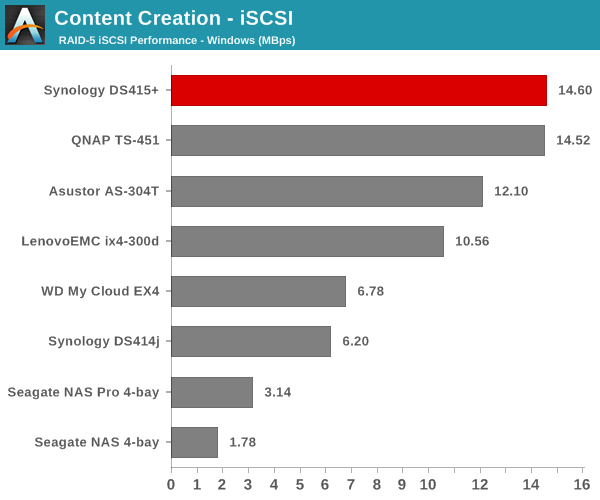
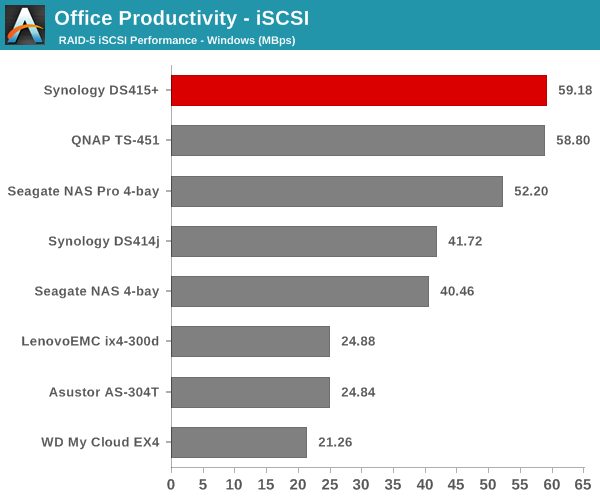
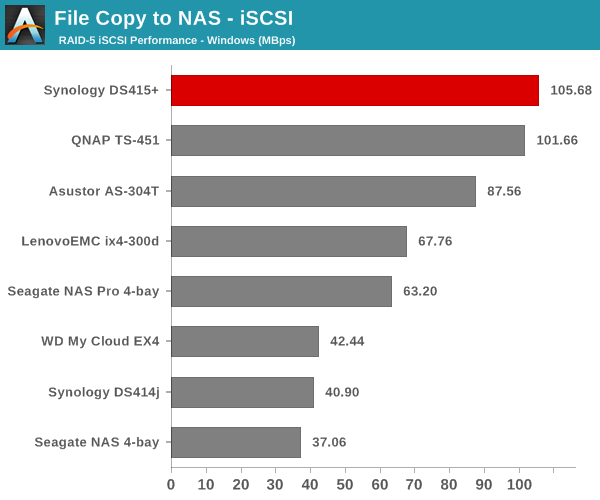
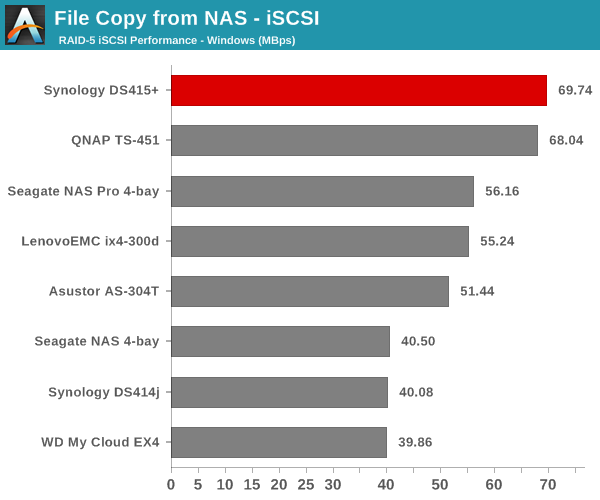
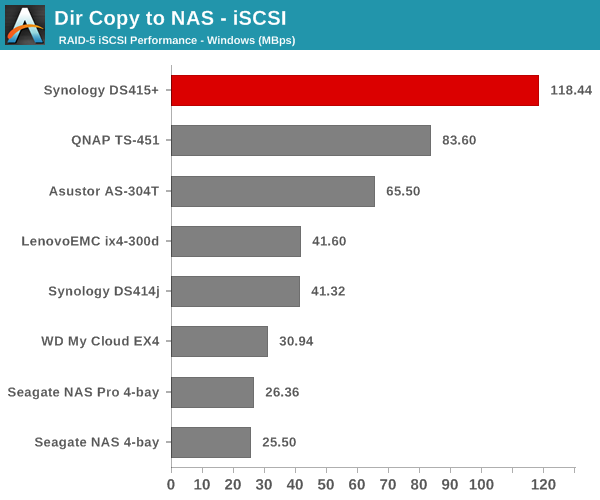

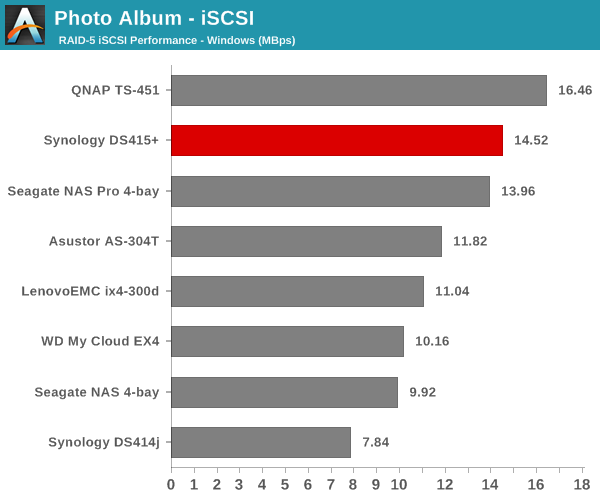
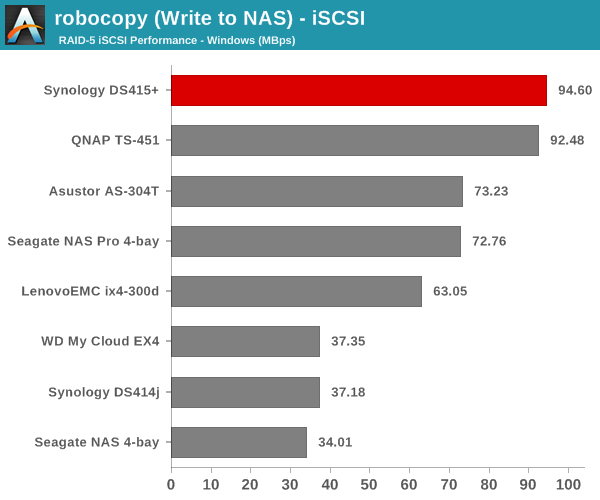











41 Comments
View All Comments
naxeem - Thursday, October 30, 2014 - link
Play edition has significantly worse CPU and memory is half of the + edition. Not sure if Play is actually capable of performing adequately and + (as far as I know) can also stream through DS Video. The play edition fails at streaming DTS audio correctly so it is useless in that regard anyway.stbufraba - Sunday, November 2, 2014 - link
I was very disappointed by the DS414play´s lack of support for DTS audio and returned it for a DS415+. Why Anandtech recommends the DS414play is something I can´t understand.Dunkurs1987 - Monday, February 15, 2016 - link
You need to spend time and decide what this NAS really gonna be for- to not regret:http://www.span.com/compare/DS416J-vs-DS416-vs-DS4...
elithrar - Thursday, October 30, 2014 - link
Thanks for the review — I've been deliberating over the DS415+ and the DS415play for a few weeks. The big plus with the 415+ is the extra cores and RAM, which means it can 'brute force' transcode 1080p. The 415Play relies on software packages (i.e. not Plex) calling the extra hardware instructions.skarnm2 - Thursday, October 30, 2014 - link
One of my criticisms of all the reviews for these NAS product, is we are not getting an idea of the cpu potential of these new chips, beyond a bunch of disk transfer speeds.As was previously mentioned, you wouldn't go with DS415Play, since the application of it's transcoding hardware is solely limited to DS Video, which means if you want Plex, you need the power of the CPU.
So for instance, one of the features of Plex server is the ability to transcode media ready to be delivered to a tablet, to take away on a trip. So how much quicker is that being delivered, with these newer chips.
Lets look at expanding the reviews away from just disk transfer speeds, since these boxes do so much more than just serve up files.
adboelens - Friday, October 31, 2014 - link
I completely agree. I understand this particular unit is not aimed at home use, but it would be nice have an overview of what the different ranges of NAS processors are capable of. Right now all the reviews that I have read about these kind of units fail in this regard and an overview of the capabilities of these processors with different plugins for DSM V would be appreciated (disclaimer I'm a big fan of Plex, so I'm particularly interested in this feature).icrf - Thursday, October 30, 2014 - link
Has anyone seen a Rangely system designed for networking and not storage? I've been looking for a Silvermont-based mini-system to use for gigabit routing, something with a pair of good Intel NICs, and have come up short. The older Atom systems were bottlenecked well south of a gigabit of throughput.shelbystripes - Thursday, October 30, 2014 - link
No, but there are motherboards suitable for this. The SuperMicro A1SAi (Avoton)/A1SRi (Rangeley), ASUS P9A-I, and Gigabyte GA-9 series of motherboards all feature quad GigE off of the integrated i354 Ethernet controller (usually with a Marvell PHY). The high-end SuperMicro boards feature the 8-core C2750/C2758 CPUs, too, and use a passive heatsink (you'll want to make sure your chassis has some kind of internal air circulation). If you're prepared to roll your own, you could build one hell of a server that shouldn't be bottlenecked by the CPU.bobbozzo - Thursday, October 30, 2014 - link
The Sophos (nee Astaro) UTM appliance model SG115 has a Silvermont Atom CPU.The price (~$850USD) includes a 1-year unlimited license, but you can get a free home-user license limited to 50 internal IPs if you don't want to renew the license after 1 year.
See http://astaro.org for the user support forum.
BTW, I recommend buying from a real reseller rather than an online store, as the reseller can give basic sizing advice, etc., without extra charge.
Sonic01 - Thursday, October 30, 2014 - link
You haven't stated if you are using Link Aggregation, as the main new feature of this NAS is hardware encryption why do none of your tests top 100MB/s?I would expect to see figures close to the 220MB/s advertised on the Synology website?